Composition of dolomite flour and method of its use
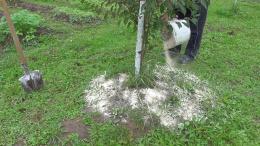
Nowadays there are many different fertilizersof natural origin. When used on a personal plot or dacha, the harvest will always be wonderful and environmentally friendly.
Dolomite flour is one of these fertilizers. It is made from limestone by crushing and grinding. But not many people know how to use dolomite flour.
What is dolomite flour, methods for determining soil acidity, which you can use to find out its degree on your site, how to feed your beds with lime or rock flour, how to use limestone flour, ways to properly apply fertilizer to the soil.
Content
- Dolomite flour – what is it?
- How to determine soil acidity
- Which is better - dolomite or lime?
- Application of dolomite flour
- Methods of application to the soil
Dolomite flour - what is it?
Many beginning gardeners are interested in: what is dolomite flour and how to use it? This fertilizer has been used as a fertilizer for gardening crops for quite some time.
This is a powdery substance that is obtained by crushing and grinding dolomite. The formula of this substance looks like this: CaMg(CO2)2. Calcium is the main active substance.
The main reason why this happens soil acidification - combination of calcium atoms with hydrogen.To improve quality indicators and stabilize the acid index, it is necessary to artificially saturate the soil with hydrogen and minerals. Using stone flour helps with this.
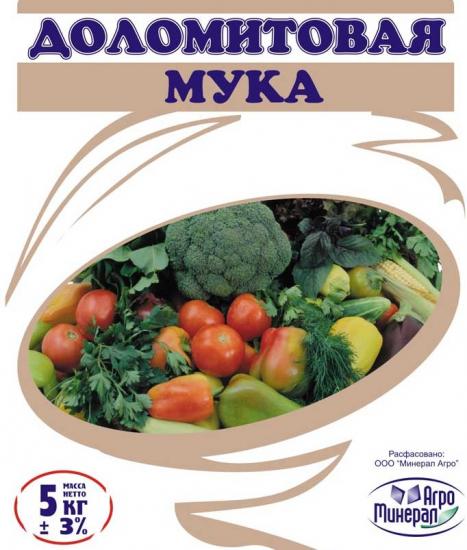
In addition, the fertilizer can be used to control pests that have a chitinous coating and reduce the acidity of soils in garden plots. The fertilizer contains a lot of fine particles, so work on introducing it into the soil should be carried out in calm weather, protected by a respirator and goggles.
How to determine soil acidity
Soil acidity is determined by pH - the strength of the potential of hydrogen - this is how this designation is literally translated from Latin. Its indicator is in the range between 0 and 14. The concept of acidity was initially introduced into science in the first half of the twentieth century. Acidity indicators were used to determine the acidity of alcoholic products. Over time, these parameters were successfully applied in agronomy.
With normal acidity, the pH will be equal to 7. The pH of very acidic soil will be 4, strongly acidic from 4 to 4.5, moderately acidic 4.5-5, and weakly acidic 5-5.5. If the soil acidity exceeds 7, it will cause an alkaline reaction.
What effect does soil acidity have on plants? Any plants absorb useful substances found in the soil. Their content in the soil depends entirely on the pH value. Most cultivated plants prefer to grow in soils that have an acidity level of 5 to 8.
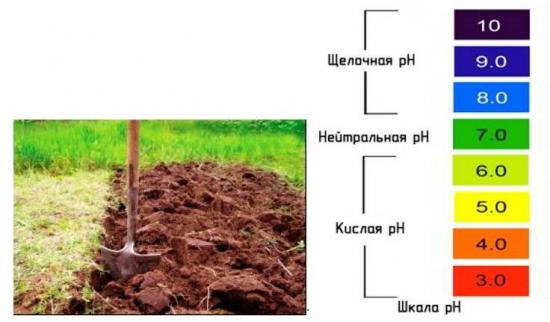
In addition, fruits that grew in acidified soil taste sour.There are several simple methods that you can use to determine the degree of acidity of the soil in your garden.
Appearance: Needs careful consideration land Location on. When it is acidified, it will have a rusty or reddish tint. Puddles formed in an area where the soil is highly acidified will have a thin iridescent film on their surface.
In addition, you can determine that the soil on the site is acidic by the weeds growing on the territory of your site, because each of them will grow only in the place where the soil has the necessary acidity level for this.
In the beds where soil high pH will grow: horse sorrel, cornflower, tricolor violet, knotweed, pikulnik, Ivan-da-Marya, plantain, horsetail, speedwell, cinquefoil, heather, creeping buttercup, mint, daisy. Almost always, soils with a high degree of acidity are very wet.
Soils with slightly pronounced acidity are suitable for the growth of completely different plants: wheatgrass, knotweed, chamomile, alfalfa, burdock, coltsfoot, rosehip, woodlice, willow, sow thistle.
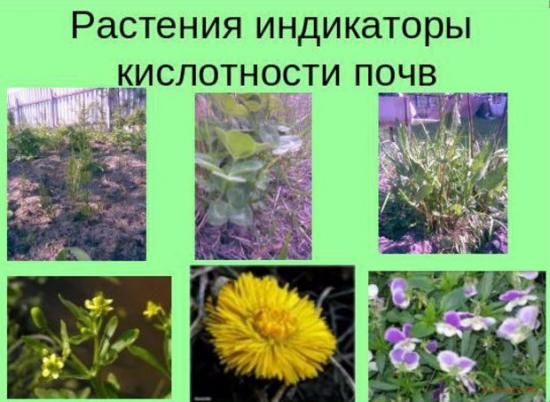
When the acidity indicator of the soil has a neutral pH value, they will tell you about it: red clover, quinoa, nettle. When nettles grow in large quantities in the garden, this is an indicator that the soil contains a large amount of acids of organic origin. They can bring great benefits for the development of garden crops.
In the garden where the poor mineral substances and soil with a high degree of density, the following will often be found: tar, thistle, sweet clover, mustard, spurge.
Alkalinized areas are usually inhabited by bindweed and poppy.
This method will help determine the level of acid content based on the weeds that predominate in the garden.
The Klychnikov method is a simple method with which you can determine the acidity of the soil yourself:
- You need to take a couple of handfuls of earth from your plot.
- Dry and pour into a bottle, up to half.
- Then wrap a small amount of chalk loosely in paper and place it on the ground that is in the bottle.
- You need to put a finger cap on the neck of the bottle. It should be flat, without air. If it is not there, then you can take a finger cut off from a medical glove. The main thing is to seal it tightly on the bottle.
- After everything, you need to shake the bottle so that the chalk can spill out of the paper and mix with the ground.
- With a high acidity level of the earth, carbon dioxide will begin to be released from interaction with chalk, pressure will begin to increase inside the bottle and the empty fingertip will fill with the released gas.
- The level of acidity is determined by the degree of swelling of the fingertip. If it swells well enough and some resistance is felt when pressing, then the earth is highly acidified. At medium pressure it is slightly acidic.
Vinegar can also help determine acidity soil. You need to pour a small amount of earth onto the glass and pour it with vinegar, the concentration of which is 9%. If foam appears, you can assume that the soil is alkaline. If a small amount of foam appears, the earth is slightly acidic, and if there is no foam at all, it is acidic.
Which is better - dolomite or lime?
Dolomite is a mineral that has a crystalline structure. It comes in different colors and shimmers in the sun.It can be colored gray, reddish, brown, white. When this mineral is ground, dolomite flour is obtained for fertilizing in the garden, which contains large quantities of magnesium and calcium oxide.
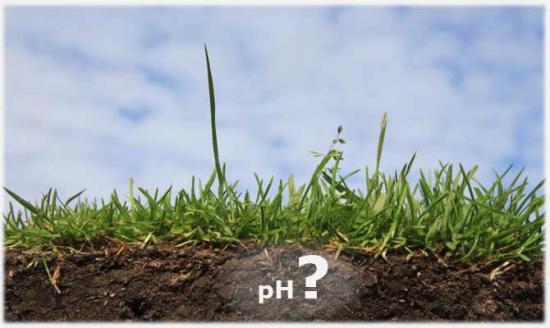
Pros:
- garden crops are provided with food;
- get the opportunity to develop better;
- destroys some harmful insects;
- the productivity and quality of the grown crop increases;
- the shelf life of the harvest increases;
- radioactive compounds are neutralized;
- promotes photosynthesis;
- helps in the formation of powerful rootth systems;
- has an affordable price.
Flaws:
- Not suitable for all plants;
- there is a danger of overdose.
Lime is obtained by processing chalk and limestone. It, like dolomite, contains calcium and magnesium. Thanks to these components, it is often used for soil deoxidation, pest control and fertilizing of cultivated plants.
Lime can be sodium, magnesian and dolomite, slaked or quicklime. Slaked lime is very popular because in this form it is not so dangerous for plants.
To slak the lime, you need to fill it with cold water, but the container must be closed, because this process occurs with the release of heat and boiling of the lime. At the same time, it can splash out to the sides.
Pros:
- lime helps plants resist diseases, thanks to the calcium content, which increases their resistance;
- the presence of lime in the soil promotes the development of nodule bacteria, and this retains nitrogen in the soil, which enters it during weeding along with the air;
- When creating compost pits, the work of beneficial microorganisms is activated. This occurs when exposed to calcium contained in lime. The bacteria help release nitrogen, which is then mineralized;
- humus is formed thanks to the same calcium, it is a catalyst that helps accelerate the decomposition processes of substances of organic origin;
- helps maintain neutral soil acidity.
Flaws:
- The biggest disadvantage is the use of quicklime. It harms microorganisms. When applied to wet soil, the process of extinguishing it starts.
If you choose between dolomite flour and lime, no one can give a definite answer, but if you compare the amount of calcium contained in their composition, then lime contains 8% less than limestone fertilizer.
After all, calcium helps improve the structure of the earth and the formation of strong roots in plants. Lime contains significantly less magnesium than crushed rock, and it is this that promotes photosynthesis in plant leaves.
Application of dolomite flour
The use of dolomite flour in the garden not only normalizes the acidity level of the soil, but also helps gardeners get a lot of benefits:
- improve the quality of soil structure;
- saturate the upper layers with nitrogen, phosphorus and potassium;
- helps beneficial microorganisms develop;
- increases the level of calcium and magnesium contained in the soil;
- accelerates the removal of radioactive substances from plants;
- helps plants absorb nutrients;
- activates photosynthesis.
To use dolomite flour to deoxidize the soil, it is necessary to strictly observe the application rates, because an overdose will significantly change the acid-base parameters of the soil, which can negatively affect the cultivation of plants.
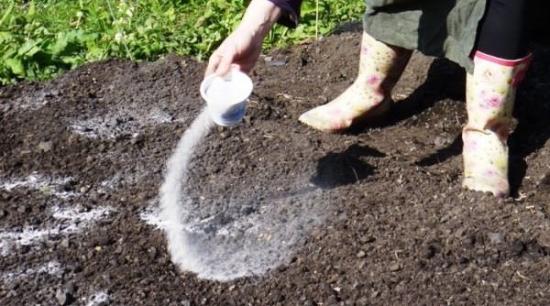
Limestone flour is practically safe, but in order to achieve the greatest results from its use, you must carefully study the instructions for use.
Methods of application to the soil
It is best to use dolomite flour in the fall, but if absolutely necessary, it can also be used in the spring and summer.
This fertilizer, which is finely ground, is often used in the form of a solution for spraying plants. It effectively helps fight pests because it destroys the chitin that makes up their shell.
To apply fertilizer per 1 m2 of highly acidified soil, 600 grams of fertilizer will be required, for moderately acidified soil - 500 grams, and for slightly acidified soil - 350 grams. For loose soil, it is necessary to reduce the amount of fertilizer applied by half, and for heavy clay or silty soil, increase it to 20%.
For greater efficiency, limestone flour should be distributed in an even layer over the entire area of the site, and then dug or plowed to a depth of 15 centimeters. If it is not possible to dig or plow, the fertilizer can be scattered around the area, but with this application option, the effect of it can only be seen after a year.
At the correct application rates, its effect will last up to eight years.
When using crushed limestone in greenhouses it must be evenly distributed over the surface of the ridges. You need to apply at the rate of 200 grams per square meter.But in this case, there is no need to dig up the soil, because dolomite in this case is necessary to create a film that will retain moisture.
Let's watch an interesting video about the use of dolomite flour:

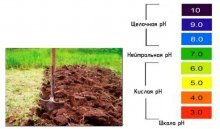
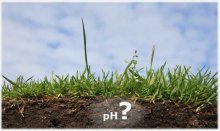
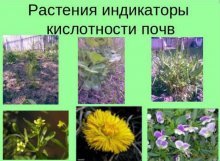
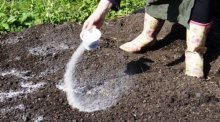
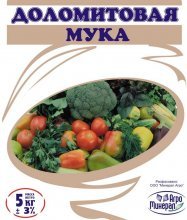
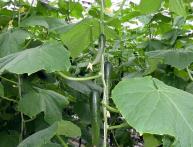
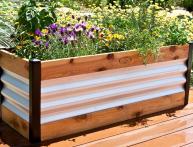



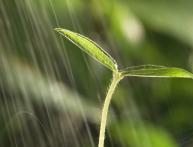
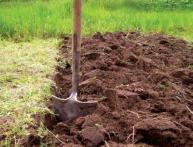
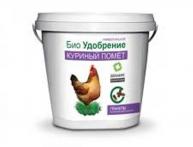
Comments
Instead of dolomite flour, it is quite possible to use lime or ash to reduce the acidity of the garden soil. The acidity of the soil in the area can be checked using indicators.